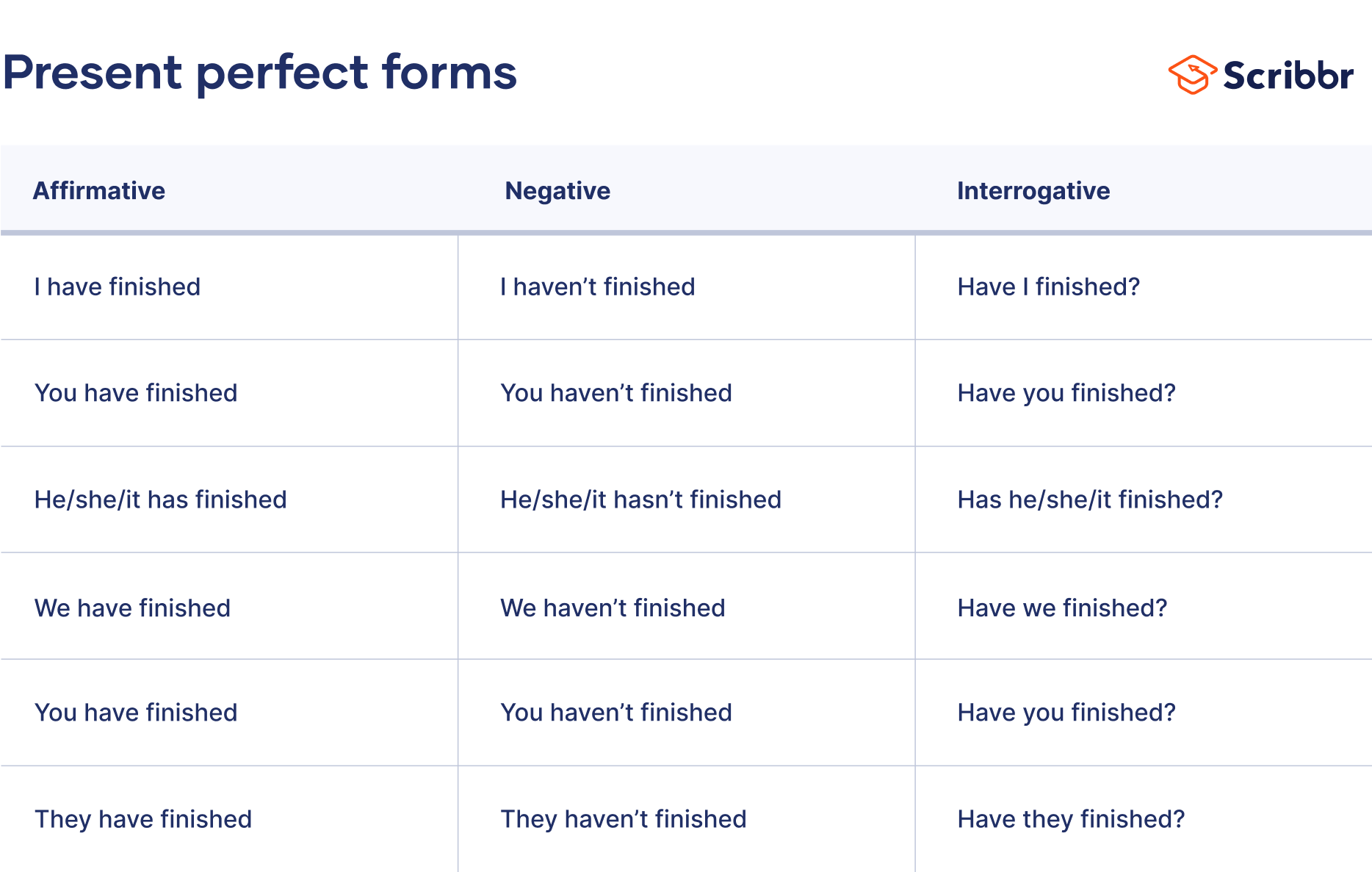Present Perfect Tense | Examples & Use
The present perfect tense is a verb form used to refer to a past action or situation that has a present consequence. It’s typically used to indicate experience up to the present, recent actions, or a change that occurred over a period of time.
The present perfect is formed using the auxiliary verb “have” and the past participle of the main verb (e.g., “I have eaten”). However, the third person singular (e.g., “he”, “she”, and “it”) uses “has” instead of “have”.
How to use the present perfect
The present perfect is used to refer to a completed past action that’s relevant to the present or to an action that began in the past and may continue in the present.
It’s used to talk about experience up to now, a change that occurred over time, recent actions (often used with “just”), and unfinished action that is expected to be completed (in the negative, often with “yet”).
The present perfect is formed using the auxiliary verb “have” along with the past participle of the main verb. The only exception is the third person singular form (“he”, “she”, “it”, and singular nouns), which uses “has” instead of “have.”
In affirmative present perfect statements, the subject and auxiliary verb are often contracted (e.g., “I’ve dreamed”).
The theater group has improved.
Sashi has just brushed his teeth.
Dana has not graduated from college yet.
The present perfect can also be used along with future simple tense constructions to describe a future action. In these instances, the present perfect clause is usually preceded by a subordinating conjunction (e.g., “when”, “until”).
After Anna has presented the report, we’ll take a short break.
- I’ve cleaned the kitchen and cooked dinner.
- Jennifer has left, and Henry has arrived.
Indicating time
As the present perfect refers to an action that occurred at an unspecified time in the past, sentences in the present perfect commonly use adverbs that refer to non-specific time (e.g., “ever”, “never”, “once”, and “so far”).
Laura has eaten at this restaurant before.
Expressions that refer to a specific time (e.g., “last week”, “yesterday”) are typically used along with a preposition (e.g., “for”, “since”).
- I’ve worked on this project yesterday.
- I’ve worked on this project since yesterday.
- Sophie has felt ill last week.
- Sophie has felt ill for the last week.
Past simple vs. present perfect
Both the present perfect and past simple refer to past action. However, they have different functions:
- The past simple is typically used to refer to an action that occurred at a definite time in the past and will not continue.
- The present perfect is used to refer to an action that occurred in the past and has present consequences or to an action that began in the past and may continue.
I have seen that film before. [I may see it again.]
I went to Toronto last year.
I have been in Toronto for three weeks. [I am still in Toronto.]
Present perfect vs. present perfect continuous
Both the present perfect and the present perfect continuous can be used to refer to the present consequences of a past action or situation (e.g., “I have lived here for two years” and “I have been living here for two years”).
However, they cannot always be used interchangeably:
- The present perfect can be used to refer to a past action or situation that may continue in the present.
- The present perfect continuous refers to actions or situations that began in the past and are definitely continuing in the present.
Aria has been traveling the world. [She is still traveling.]
These verbs are typically not used in the present perfect continuous.
- I have been knowing him for years.
- I have known him for years.
How to form negatives
Negatives are formed by adding the adverb “not” between the subject and the main verb. This is the case for all subjects.
We haven’t lived in the city for almost two years.
How to form questions
To ask a yes–no question in the present perfect, put the auxiliary verb first, followed by the subject and the past participle of the main verb.
Has Drake booked a return flight?
To ask a question using a wh-word (an interrogative pronoun like “what” or an interrogative adverb like “when”), place the pronoun or adverb before “have” (or “has” for the third person singular).
What have we done?
Why has Aaron borrowed my laptop?
How to form the passive voice
In a passive sentence, the subject is acted upon (rather than performing the action). In the present perfect, the passive voice is formed by adding the past participle of the verb “be” (i.e., “been”) between the auxiliary verb and the past participle of the main verb.
The thieves have been followed by the police.
I have been grounded.
Other interesting language articles
If you want to know more about nouns, pronouns, verbs, and other parts of speech, make sure to check out some of our other language articles with explanations and examples.
Frequently asked questions about the present perfect tense
Sources for this article
We strongly encourage students to use sources in their work. You can cite our article (APA Style) or take a deep dive into the articles below.
This Scribbr articleRyan, E. (2023, September 25). Present Perfect Tense | Examples & Use. Scribbr. Retrieved 24 December 2025, from https://www.scribbr.co.uk/verb/present-perfect-tense/
Aarts, B. (2011). Oxford modern English grammar. Oxford University Press.
Butterfield, J. (Ed.). (2015). Fowler’s dictionary of modern English usage (4th ed.). Oxford University Press.
Garner, B. A. (2022). Garner’s modern English usage (5th ed.). Oxford University Press.




